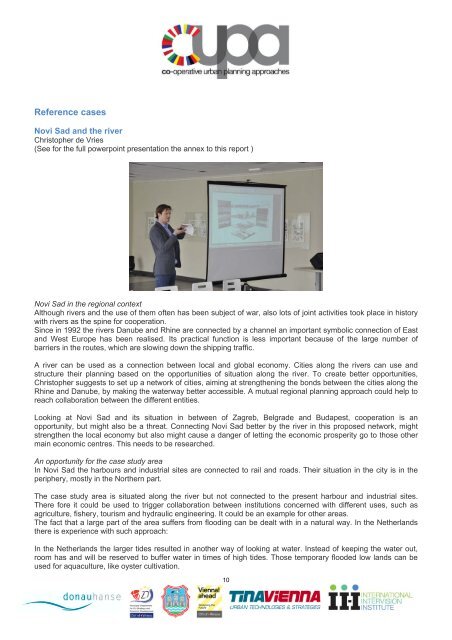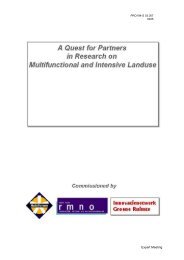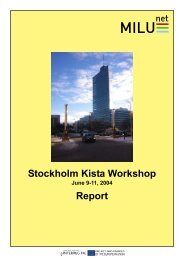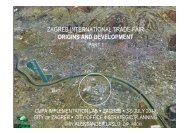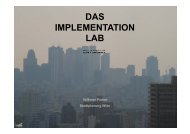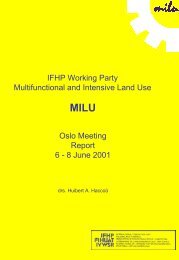IL-NOVI-SAD-report-2012-06-27.pdf - Iiinstitute.nl
IL-NOVI-SAD-report-2012-06-27.pdf - Iiinstitute.nl
IL-NOVI-SAD-report-2012-06-27.pdf - Iiinstitute.nl
Create successful ePaper yourself
Turn your PDF publications into a flip-book with our unique Google optimized e-Paper software.
Reference cases<br />
Novi Sad and the river<br />
Christopher de Vries<br />
(See for the full powerpoint presentation the annex to this <strong>report</strong> )<br />
Novi Sad in the regional context<br />
Although rivers and the use of them often has been subject of war, also lots of joint activities took place in history<br />
with rivers as the spine for cooperation.<br />
Since in 1992 the rivers Danube and Rhine are connected by a channel an important symbolic connection of East<br />
and West Europe has been realised. Its practical function is less important because of the large number of<br />
barriers in the routes, which are slowing down the shipping traffic.<br />
A river can be used as a connection between local and global economy. Cities along the rivers can use and<br />
structure their planning based on the opportunities of situation along the river. To create better opportunities,<br />
Christopher suggests to set up a network of cities, aiming at strengthening the bonds between the cities along the<br />
Rhine and Danube, by making the waterway better accessible. A mutual regional planning approach could help to<br />
reach collaboration between the different entities.<br />
Looking at Novi Sad and its situation in between of Zagreb, Belgrade and Budapest, cooperation is an<br />
opportunity, but might also be a threat. Connecting Novi Sad better by the river in this proposed network, might<br />
strengthen the local economy but also might cause a danger of letting the economic prosperity go to those other<br />
main economic centres. This needs to be researched.<br />
An opportunity for the case study area<br />
In Novi Sad the harbours and industrial sites are connected to rail and roads. Their situation in the city is in the<br />
periphery, mostly in the Northern part.<br />
The case study area is situated along the river but not connected to the present harbour and industrial sites.<br />
There fore it could be used to trigger collaboration between institutions concerned with different uses, such as<br />
agriculture, fishery, tourism and hydraulic engineering. It could be an example for other areas.<br />
The fact that a large part of the area suffers from flooding can be dealt with in a natural way. In the Netherlands<br />
there is experience with such approach:<br />
In the Netherlands the larger tides resulted in another way of looking at water. Instead of keeping the water out,<br />
room has and will be reserved to buffer water in times of high tides. Those temporary flooded low lands can be<br />
used for aquaculture, like oyster cultivation.<br />
10


